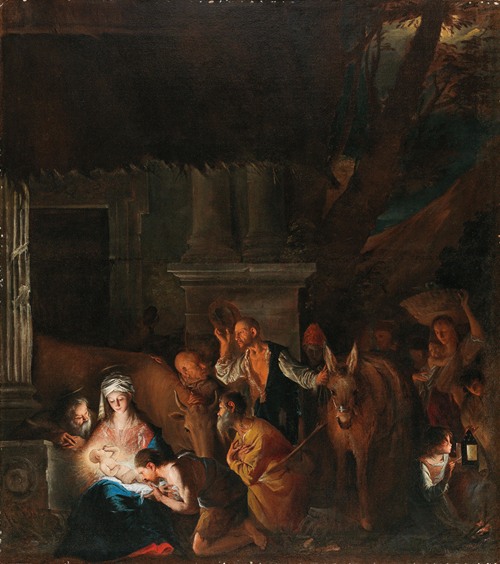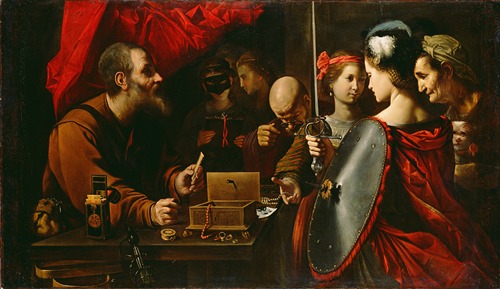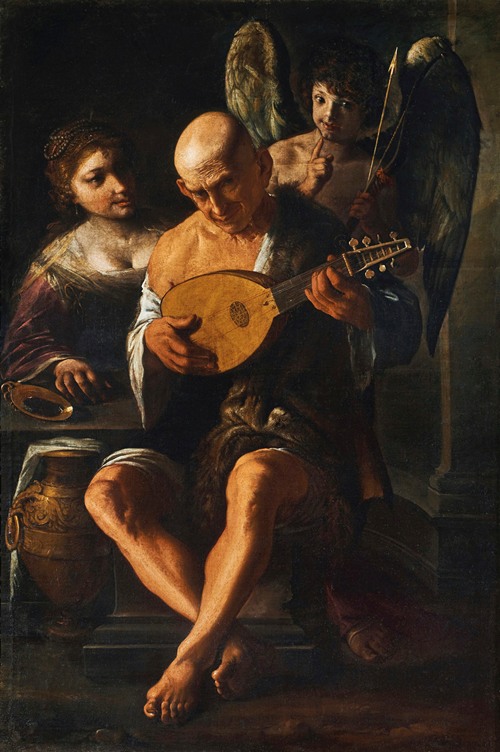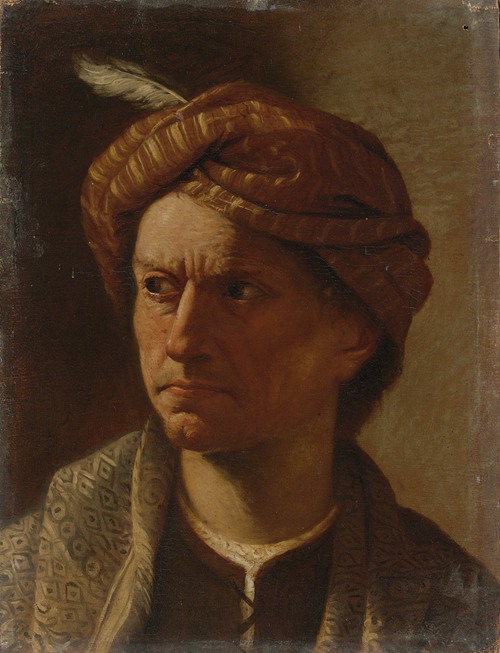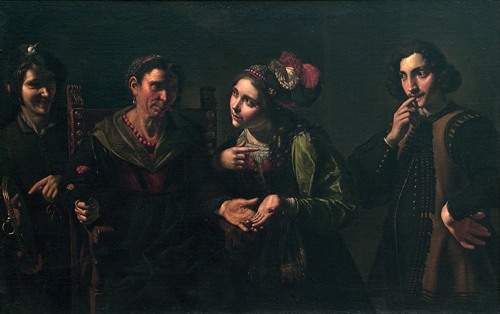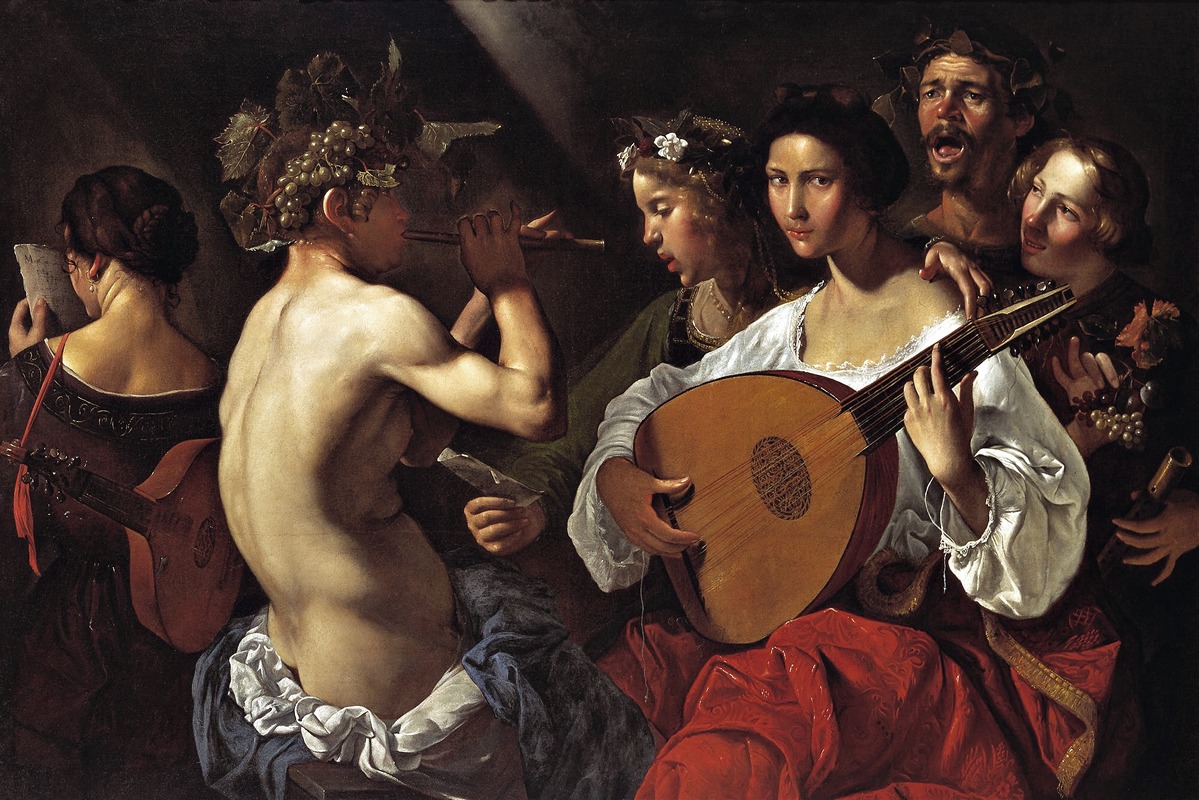
Pietro Paolini, called il Lucchese was an Italian painter of the Baroque period. Working in Rome, Venice and finally his native Lucca, he was a follower of Caravaggio to whose work he responded in a very personal manner. He founded an Academy in his hometown, which formed the next generation of painters of Lucca.
Pietro Paolini was born in Lucca, as the youngest son of Tommaso Paolini and Ginevra Raffaelli. His family was well-off as his mother was a descendant of a prominent Lucchese family.
Paolini‘s father sent his son to Rome to the workshop of Angelo Caroselli when he was 16 years old. Angelo Caroselli was a follower of Caravaggio who worked in an eclectic style. Whereas in the past the relationship between Caroselli and Paolini was regarded solely as that of a master and apprentice, more recently discovered materials point to a more complex relationship, more akin to that of collaborators and characterised by the sharing of themes. Caroselli was continuously absent from Rome from June 1616 until February 1623 so it would have been impossible for Caroselli to be Paolini's master. Paolini’s documented presence in Lucca in 1626, at least for the period June–October further limits the period of their interaction. In Caroselli's workshop Pietro Paolini had the opportunity to study the various schools and techniques, which is reflected in the stylistic flexibility of his work.
In Rome Paolini was exposed to the influence of the second generation of naturalist painters in the Caravaggesque tradition whose principal representative was Bartolomeo Manfredi and also included Cecco del Caravaggio and Bartolomeo Cavarozzi.
From c. 1629-1631 he lived for two years in Venice where he had the opportunity to admire the works of Paolo Veronese and Tintoretto. He returned to Lucca, where he lived the remainder of his life. His parents had died in previous years and he needed to support his many siblings. After establishing a successful studio in Lucca he specialised in cabinet pictures often including allegorical or musical subjects and still lifes, a genre which he introduced to the city. He received multiple commissions from religious institutions in Lucca as well as prominent local citizens.
On 25 November 1651 Paolini married Maria Forisportam Angela di Girolamo Massei, by whom he had two sons: Andrea, who became custodian of the Public Archives, and Giovanni Tommaso.
Around 1652 (or possibly even earlier) Paolini founded the 'Academy of Painting and Drawing of Lucca', at which he helped train many painters. The Academy contributed to a particularly lively artistic environment in Lucca in the second half of the 17th century. Numerous artists, such as Girolamo Scaglia, Simone del Tintore (a still-life painter) and his brothers Francesco and Cassiano, Antonio Franchi, Giovanni Coli and Filippo Gherardi were trained at the Academy. Pietro Testa may also have been a pupil of Paolini. Paolini owned a collection of coins and plaster casts taken from ancient models as well as a collection of ancient and modern weapons that were used as models and props in the Academy.
Paolini later almost entirely abandoned painting in order to devote himself to teaching.
He died in Lucca in 1681.
